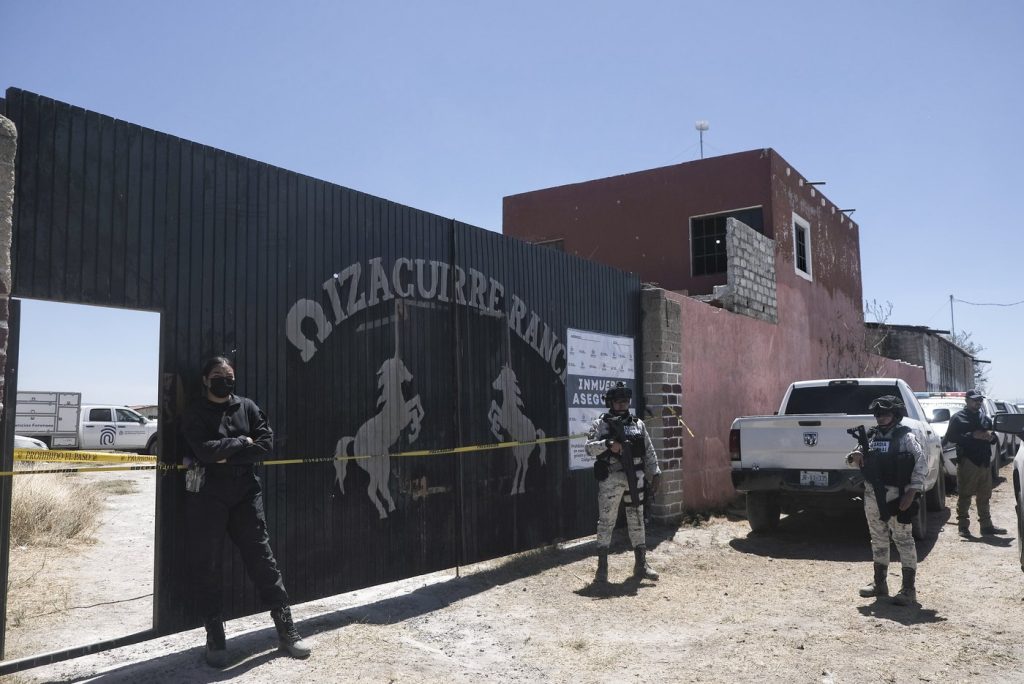MEXICO CITY (AP) – This week, prosecutors in western Mexico confirmed the discovery of hundreds of clothing items and bone fragments by a group searching for missing relatives at a known cartel training site, highlighting significant failings in the initial investigation. The location, situated in the state of Jalisco, is just one of many such grim findings, as Mexico’s official registry indicates over 120,000 disappeared individuals. The number of discovered sites has surged over the past 15 years as families of the missing take on the responsibility that the government often neglects in seeking their loved ones.
The group in question, known as the Jalisco Search Warriors, investigated a ranch in Teuchitlán, approximately 37 miles (60 kilometers) from Guadalajara. This site was identified by National Guard troops last September, leading to the arrest of 10 people, the rescue of two hostages, and the finding of a body, all indicative of it being a cartel training facility. Despite these developments, the state prosecutor's office later halted the investigation, creating a gap that necessitated the involvement of the search group, which acted on an anonymous tip.
Indira Navarro, the leader of the Jalisco Search Warriors, commented on the site, stating, "This ranch served as a training site and even though it sounds awful, really harsh, for extermination." This ranch exemplifies a troubling trend where drug cartels utilize remote locations to forcibly make their victims disappear.
A 2022 visit by The Associated Press to a site near Nuevo Laredo revealed alarming conditions, including an abandoned house converted into a crematorium, where investigators uncovered 20 inches (50 centimeters) of bone fragments and ash spread across the floor. This horrifying revelation is not an isolated incident; it reflects a broader pattern of violence and disappearances associated with cartels.
Several notable cases further illustrate the brutality faced by individuals in Mexico:
- The Stewmaker (Baja California): In 2009, Santiago Meza confessed that he dissolved 150 to 300 bodies for his drug lord by using lye in large oil drums, burying or disposing of the remains in rivers. This macabre practice earned him the nickname “Pozolero,” which means the one who makes pozole, a traditional Mexican stew.
- San Fernando (Tamaulipas): The discovery of nearly 200 bodies in clandestine graves in 2011 marked a turning point in Mexico’s struggle with mass disappearances. Many victims were Central American migrants who were kidnapped and murdered by the Zetas cartel. Some were coerced into joining the gang through merciless initiatives.
- Piedras Negras Jail (Coahuila): In 2017, an investigation revealed that the Piedras Negras jail—across the border from Eagle Pass, Texas—served as a center for the Zetas cartel, with reports suggesting that up to 20 individuals were tasked with disposing of victims in barrels of diesel. Methods included shootings and bludgeoning to dismember bodies.
- La Bartolina (Tamaulipas): This site emerged in media reports around Matamoros around 2016 but did not see serious action from authorities for years. By 2022, investigators had recovered approximately 1,100 pounds (500 kilograms) of bones, identifying at least 15 "extermination sites" in Tamaulipas, with La Bartolina being the largest. Federal investigations are ongoing.
The harrowing discoveries across various states in Mexico underscore a national crisis surrounding drug-related violence and the grim reality facing families of the missing. As search groups continue to dig through these tragic chapters, the persistence of crime organizations poses ongoing challenges to public safety and justice.










